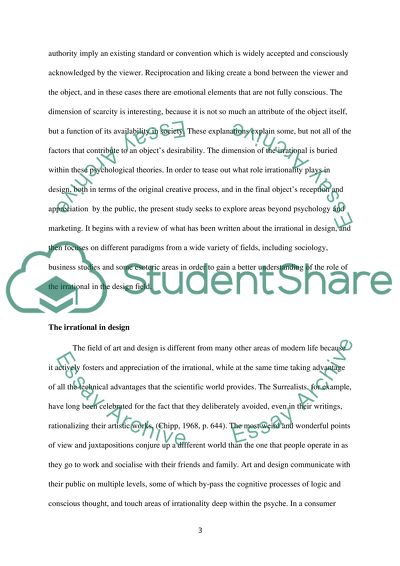Cite this document
(“Why irrational will affect design identity: the relationship between Literature review”, n.d.)
Why irrational will affect design identity: the relationship between Literature review. Retrieved from https://studentshare.org/visual-arts-film-studies/1461419-why-irrational-will-affect-design-identity-the
Why irrational will affect design identity: the relationship between Literature review. Retrieved from https://studentshare.org/visual-arts-film-studies/1461419-why-irrational-will-affect-design-identity-the
(Why Irrational Will Affect Design Identity: The Relationship Between Literature Review)
Why Irrational Will Affect Design Identity: The Relationship Between Literature Review. https://studentshare.org/visual-arts-film-studies/1461419-why-irrational-will-affect-design-identity-the.
Why Irrational Will Affect Design Identity: The Relationship Between Literature Review. https://studentshare.org/visual-arts-film-studies/1461419-why-irrational-will-affect-design-identity-the.
“Why Irrational Will Affect Design Identity: The Relationship Between Literature Review”, n.d. https://studentshare.org/visual-arts-film-studies/1461419-why-irrational-will-affect-design-identity-the.


